Paul Carroll is a Dublin-based writer and comics creator. He made his start in writing with Irish folklore books, before starting to work in comics. In this interview, ahead of the release of Life & Death from Limit Break Comics, Paul was given questions from his creative partners, Gary Moloney and Gareth Luby. (Side-note: Paul is the editor for this site, and aside from writing about himself in the 3rd person, also suffers from not knowing when to shut up.)

You’ve worked a lot with properties and characters created by others (Meouch, The Wren, Chuck), how different was working on Life & Death to those projects?
The big difference for me was the creative control in the stories at a script level. There was a lot more freedom to play around with ideas in the script when I was working with my own characters. It’s much easier to “kill your darlings” in a script when you don’t have to worry about the artist’s emotional attachment to a character or an idea. (In some cases, the killing is also literal in Life & Death – decisions like that don’t really happen with the likes of Wren unless Jason Browne requests it, or with Frankie unless it’s a target.)
After that, it comes down to finding the right artist for the story. It’s the total reverse of how I’d previously worked on comics. I learned a lot more as I worked on the book – and as Limit Break Comics was coming together – about what I’d look for in a collaborator, which should in theory make the process more fluid next time.
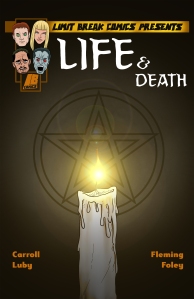
What was it about the stories in Life & Death that meant they had to be told in a comic?
The short, obvious answer is that I needed the art to make the impact for these stories. When I wrote the scripts, there was a real sense of trying not to overwrite everything, to allow the other creators to pace things and make the revelations and twists more apparent in their own ways.
Colour is a big part of that. Blood Bounty and Mourning Coffee rely heavily on reds, while Death and Taxes needed more everyday tones, and Wake the Dead required a change of colours from orange to green – my experiences in writing prose fiction warned me way in advance that that would make for some sloppy, boring writing to get the point across.
You’ve recently taken on the duties of penning The Wren, what drew you to the character and what do you hope to explore in your run?
I was approached by Jason – the artist and original writer for The Wren – to take over the series after our work together on Tomte: The Warrior Elf. It was the first book I’d read from the Irish small press community (aside from work by Anthea West, who I knew way before I knew there were people in Ireland making their own comics!) It’s a fun character to write for and to think up stories about.
I’m very much about returning to the roots of the comic as much as I can. The first season (issues 1-12) built up in a big way. Now that Jack is back in school, in a new home, and knows much more about the superhero society, we have an opportunity to play with his secret identity a bit. Jason has some ideas about how he wants the main plot for the season to go, but otherwise I’ve something of a free reign with characters and where they’ll appear.
There’s obviously a lot of pressure with this; aside from the work of Anthea West, who I’ve known since the days of Bebo, The Wren was the first Irish small press comic I read, and the longest running small press title in the country. I like to think Jason’s faith in me is well-placed. He’ll still be a big part of the plotting process, and he’ll likely have something to say about the direction I take with certain parts of the story, but that’s a safety net for me, and it means I can throw out some crazier ideas with him and see what’s interested in before scripting it.
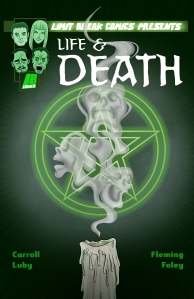
You colour and letter a lot of your own work, can you explain your approach to those disciplines?
Lettering was the first thing I tried in comics that wasn’t writing, and it came as something of a necessity. Having some understanding of the Adobe suite, I thought, was enough. It’s not a bad start, knowing how to use the programs, but it took some feedback from a few people to really figure out what I was doing wrong. The first Meouch books had been readable, but that’s about it. So I learned as much as I could, and I looked at different ways other letterers worked to see how I could do more than just throw words onto the page.
With the colouring, I started with flatting a couple of short Meouch stories. When myself and Gareth were working on A Knight’s Tail, I wanted to try colouring it myself. Gareth finished off the colours on that one, making it a lot more vibrant and giving it more depth than I’d managed, but I’d at least figured out the palette for the story.
When it came to colouring the stories in Life & Death, I was a little more aware of using colour as a storytelling tool. Colour choices define the world in which a story takes place, and the shifting tones on a page can inform the reader of characters’ emotions and the atmosphere on the page, working in tandem with the artist to make the storytelling pop. I spent the project seeking feedback from Gareth and Gary about colour choices and tones.
It was exhausting, to say the least, trying to balance a day job and a few other responsibilities with the comic work. A big takeaway from it is more confidence and awareness in the additional processes in storytelling when it comes to making comics, which is now etched into the back of my mind any time I start writing something!
Your first prose stories were based on Irish folklore in the 21st century; can you tell us how you approached this adaptation?
Adapting stories always comes with some difficulty. I took some liberties with the way in which some stories were told. The first book, Balor Reborn, takes the story that defines how Balor can be killed and turns it on its head. With everything else that followed, I sought to find something interesting about a creature or a god and make a new story out of it. Irish folklore is wrapped up in Irish history and informed by the introduction of Christianity; the Famine and the notion of sin become as integral to some tales as the blood-ties of the gods and the relationships between different heroes in the old stories.
I try, as hard as I can, to stick to the original story as close as possible, but sometimes liberties have to be taken. Whenever I have doubts, they’re usually cleared up by a friend of mine who has an interest in Irish folklore – who just so happens to read ridiculously fast – so I can clear up whether I’m making something up from scratch or if in bringing the story to the twenty-first century, I’m “allowed” to do what I do.
And, of course, within the books the old stories are real. They’re actual history, lost to the passage of time and hidden in plain sight as just stories.

You have recently launched Limit Break Comics with Gary Moloney and Gareth Luby. How did this come about and what is the idea behind Limit Break Comics? What can we expect?
There’s a bit of a background story to this, going back a few months. I’d been talking to Gary about an idea for a fantasy comic, but didn’t have a name. He’d suggested Limit Break, but it sounded more like an anthology name to me. Nothing really happened after that, until the three of us started speaking about setting up a label together over some drinks. We threw around some names, some of which were cringy, some of which were pompous, and none of which I was sold on.
At some point, the name popped back into the conversation.
By that time, myself and Gary were looking to publish our collections of short stories, so it made sense to have a brand name to trade under. We were both working on some fantasy and sci-fi ideas, which fitted the name, so we mentioned it to Gareth.
The idea behind Limit Break Comics is to provide a voice for storytellers. We have a few other ideas in mind for our online presence, and a few ideas for books in the works. The main thing for us is to be as an open and welcoming as possible. It’s how we all ended up becoming friends in the first place, first with myself and Gareth at the Geek Mart, and then the two of us with Gary at last year’s Small Press Day. We’re all about being supportive of each other and providing honest feedback on comics throughout the production process. It’s allowed us all to learn a lot about comics, and about how to talk to people about them.
There are more exciting things in the works for Limit Break Comics, including the first Meouch stories under the brand. In the meantime, we’re focusing on getting our names out there, on attending some events, and on helping each other grow as storytellers.
You have always been an avid follower and supporter of the small press scene in Ireland. How do you feel the scene has progressed since you first became a follower of it, and who would you feel are the stand out creators/up- and-comers in your eyes?
I properly became aware of the Irish small press scene in 2015. I was in DCU doing a Master’s in Multimedia, and my group for my thesis settled on doing a documentary on comic book culture in Ireland. This meant having to familiarise myself with a few new names. Anthea helped with that, but mostly my knowledge of who’s who came from attending events. The first Small Press Day, and the subsequent Dublin Comic Con, allowed me to talk to more of the indie creators in Ireland.
All of that in mind, it seems like there are a lot more people making comics than there used to be. At the very least, I’m aware of more of them, and of the different roles people assign to themselves. A few things disappeared over the years – Lightning Strike stopped doing their anthologies for a while – and more creators were releasing different sorts of work that 2015-Paul would have loved to talk about for the documentary.
The big change since I started following the scene is the number of people finding professional work. Ireland has an abundance of colourists working professionally, now, and almost as many people who’ve drawn Spider-Man comics. The Comics Lab stopped functioning independently, becoming part of DCAF, and more comic related events have sprouted every year. It means there’s a lot more opportunity to find markets in Ireland, but it does also mean the potential for some overcrowding.
It’s almost impossible, now, to figure out who’s due to make their professional break. I’d like to think that some people – like Hugo Boylan – will have their creator-owned comics reach the wider market. Colourists tend to move into the professional scene more quickly, here, and part of that is likely because of the support network between established pros and the small press creators. Sometimes the idea that everyone in Ireland knows each other is both accurate and helpful. As a community, the comic crowd are consistently dragging each other up.

In your first release on Limit Break, Life & Death, you have written stories focusing on horror or supernatural themes; what draws you to this genre?
I grew up on Buffy the Vampire Slayer, is the short answer. When I was in primary school and definitely not supposed to be watching shows like that, I became enthralled. There’s something special about supernatural stories, to me; almost everything about them can be ordinary, until you hit one little detail. Buffy is just a regular teenage girl to most people, but at night she’s the warrior at the Hellmouth. Willow is the school nerd who discovers herself in college; her coming-out story runs parallel with realising her magical potential.
I like taking something ordinary and twisting it. Mourning Coffee and Death and Taxes are just office stories, until their respective twists. My novel, A Death in the Family, is a story about a Millennial getting a new job and things not going as smoothly as he’d anticipated – the fact that the job is that of Grim Reaper is just a matter of genre.
It’s the same with any genre narrative, really. With Life & Death, I needed to identify mystery in regular life. With Meouch, it’s about needing to find little quirks to reality in as funny a way as possible, while The Wren is about needing to see the hero inside normal people. The beauty of writing, whether for comics or for prose, is that it allows us to look at the world through a different coloured lens.
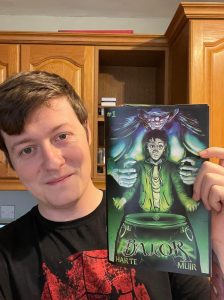

















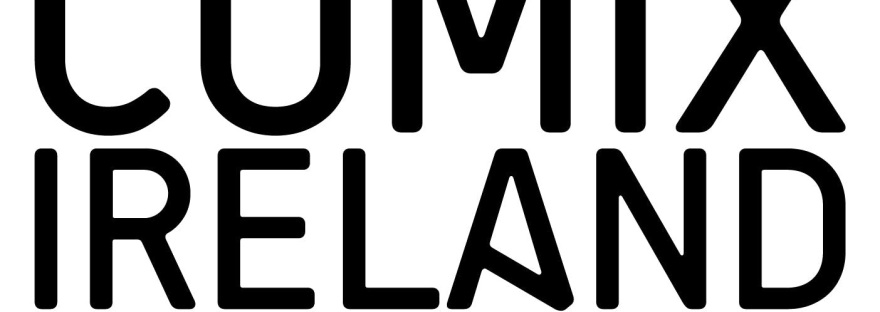
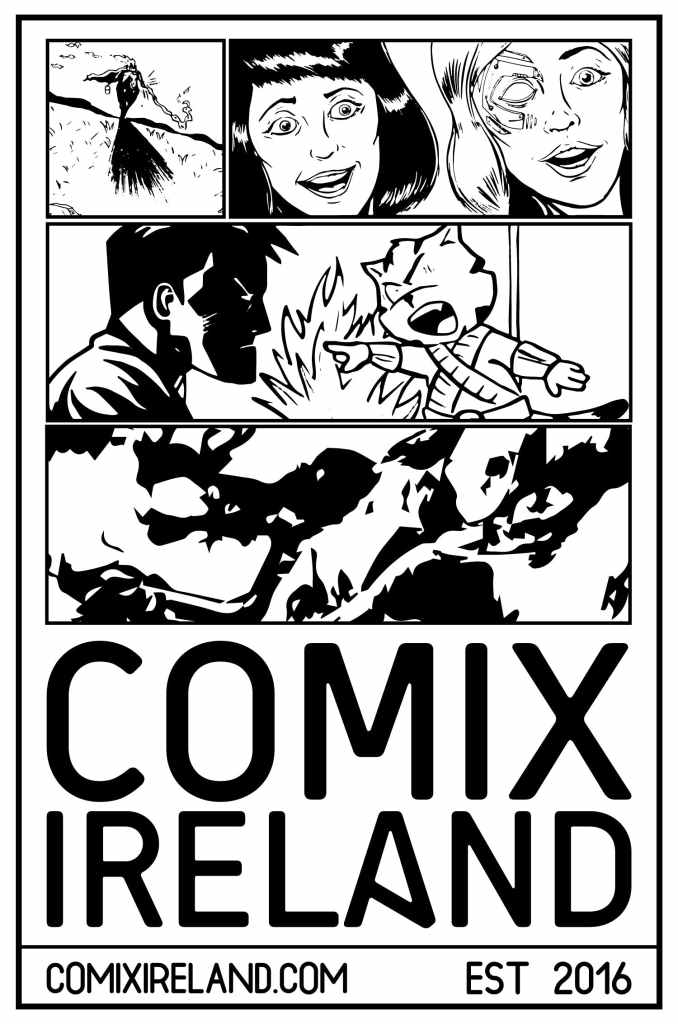






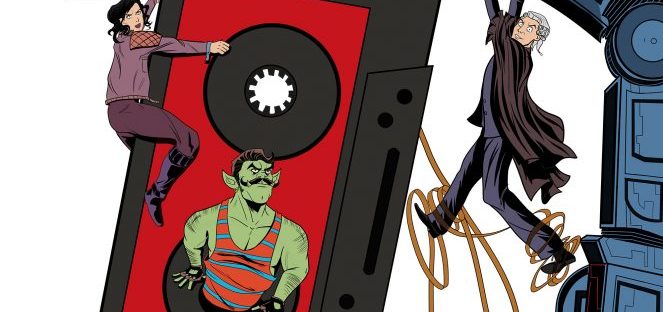

 You’ve worked with a lot of different creators; what’s your process in finding the right person for each story?
You’ve worked with a lot of different creators; what’s your process in finding the right person for each story?
 On the Limit Break Comics side of things, I am going to be working on the Panel Addicts initiative. We have so much talent here in Ireland across the all aspects of the comics creative process. I want to be able to showcase those people and provide a central hub for their work. Twitter has become the de facto home for the comics crowd to promote their work and over the past year, more and more creatives have been posting short comics/sketches there. A more permanent home is needed to archive this material so that it isn’t forgotten. So we are taking inspiration from the Sketchblogs of yesteryear and putting together a regular blog that will feature comic art and short stories. More importantly, what the blog will provide is a forum for a collective of Irish Small Press creators. We going to start out slowly, but we hope to be able to expand it over the coming months and open up submissions in the near future.
On the Limit Break Comics side of things, I am going to be working on the Panel Addicts initiative. We have so much talent here in Ireland across the all aspects of the comics creative process. I want to be able to showcase those people and provide a central hub for their work. Twitter has become the de facto home for the comics crowd to promote their work and over the past year, more and more creatives have been posting short comics/sketches there. A more permanent home is needed to archive this material so that it isn’t forgotten. So we are taking inspiration from the Sketchblogs of yesteryear and putting together a regular blog that will feature comic art and short stories. More importantly, what the blog will provide is a forum for a collective of Irish Small Press creators. We going to start out slowly, but we hope to be able to expand it over the coming months and open up submissions in the near future.






 What’s your production process like? Do you script the whole book first, or do you make it up as you go along?
What’s your production process like? Do you script the whole book first, or do you make it up as you go along?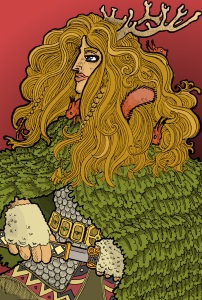


 If you were to start again now, would you do anything differently?
If you were to start again now, would you do anything differently? As well as all-ages fantasy, you’ve also worked on horror. What made you work in a different genre?
As well as all-ages fantasy, you’ve also worked on horror. What made you work in a different genre?